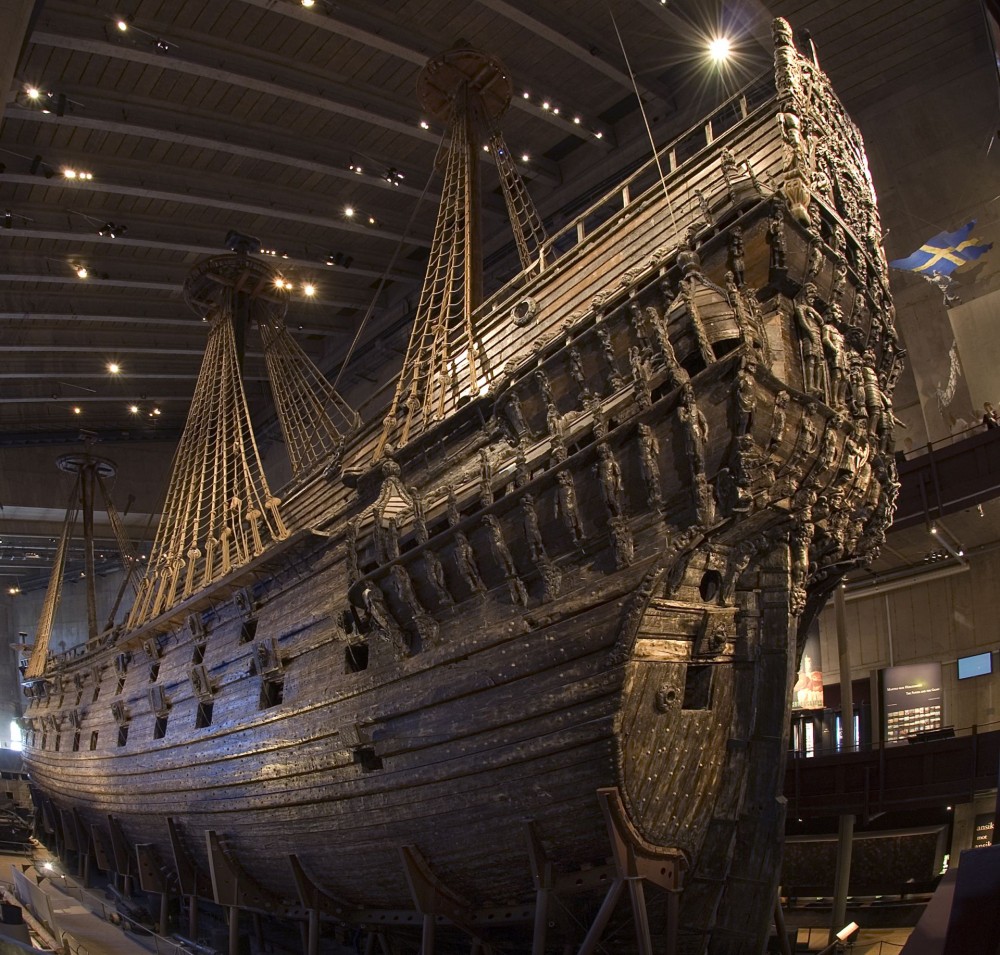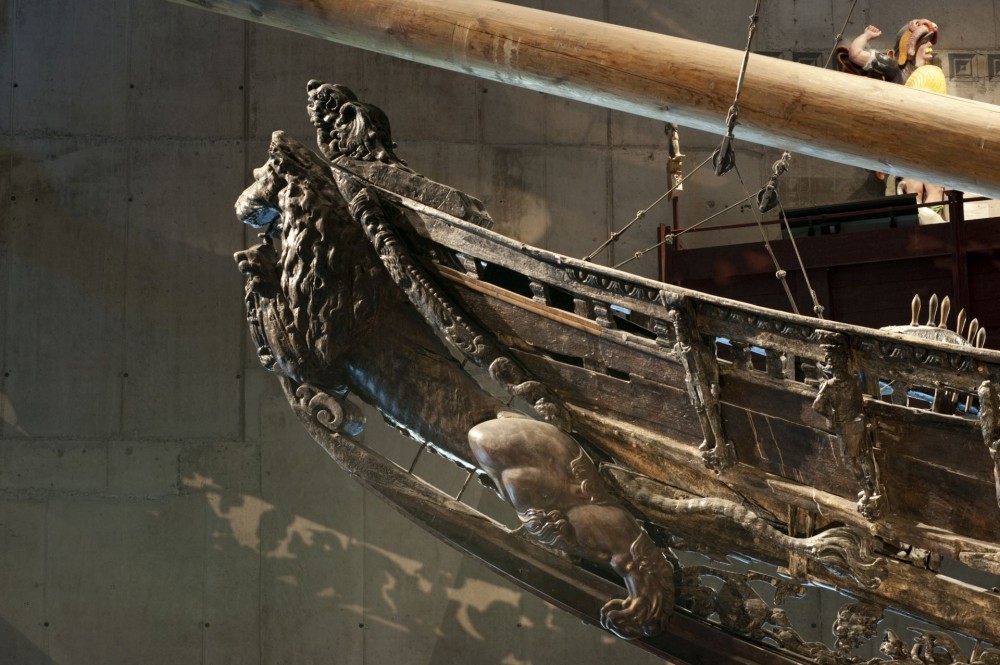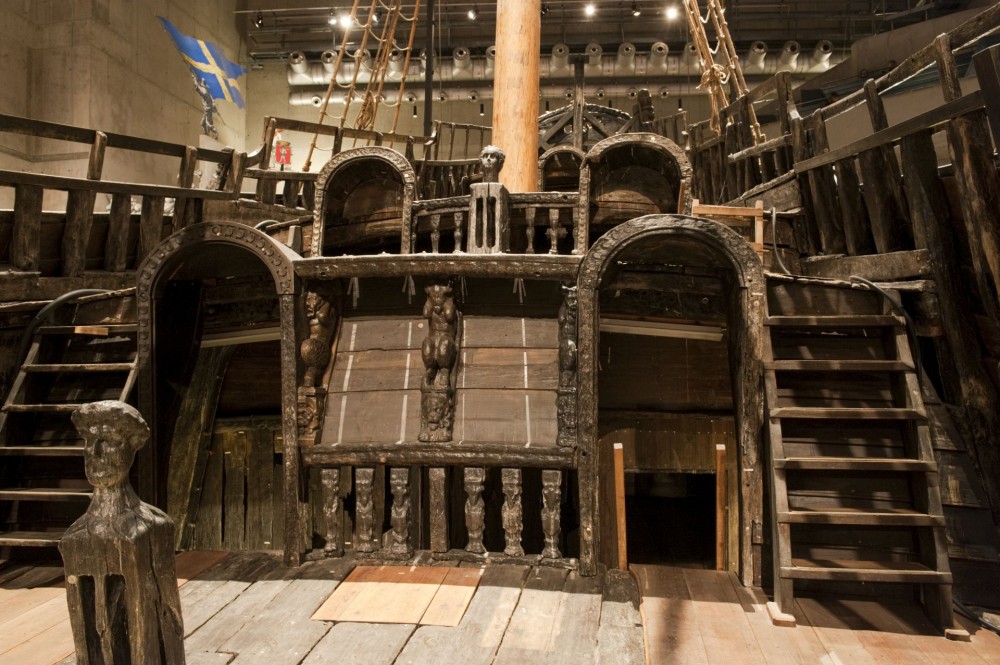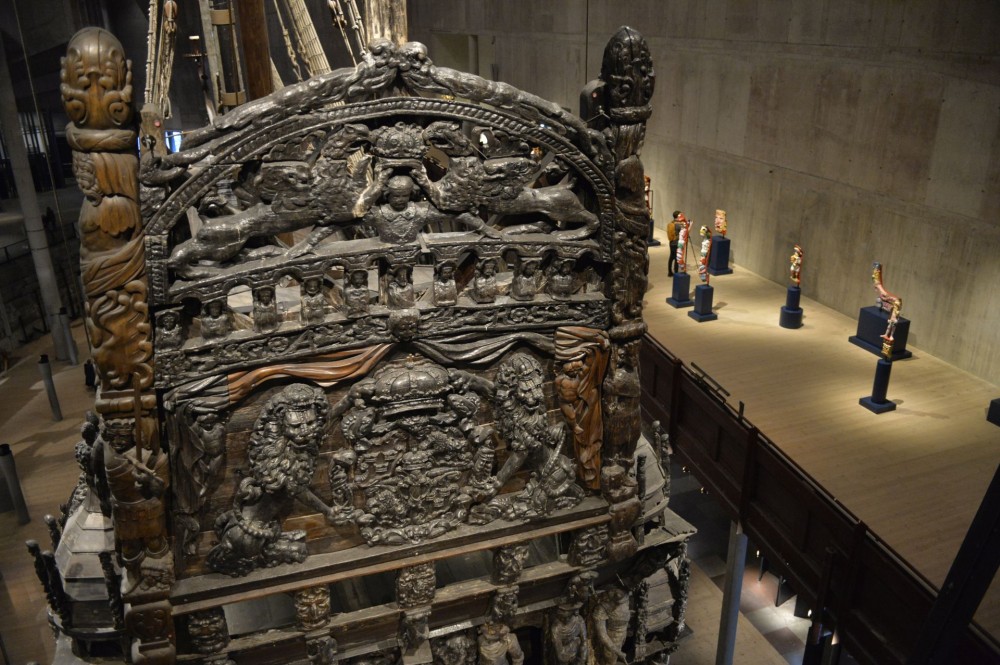
The ship Vasa in the Vasa Museum. Photo: Karolina Kristensson, the Vasa Museum/SMTM.
Meet the Vasa's sculptures, and gain insight into how the ship would be sailed and used in battle.

The ship Vasa’s figurehead, a lion. Photo: Anneli Karlsson, the Vasa Museum/SMTM.
In 17th-century Stockholm, few could read, but the sculptures symbolism spoke their own language. King Gustav II Adolf used the imagery in the sculptures as a tool of propaganda to build his image as brave, powerful, and learned—qualities that were important to royalty during this time. In the exhibition 'Vasa Up Close,' a selection of reconstructions of Vasa's sculptures, in their original colors, are displayed, all of which can also be seen in their original form on the ship.

Part of the ship Vasa’s upper deck, the stern. Photo: Anneli Karlsson, the Vasa Museum/SMTM.
On the Vasa ship, there are 460 sculptures and 300 ornaments. Many of the sculptures depict characters from Greco-Roman mythology, such as Hercules and the nereids, while others are from the Old Testament, like King David and Gideon. There are also sculptures intended to be understood by those without extensive knowledge of history, religion, or art, such as the ashamed Polish nobleman, meant to inspire courage in Vasa's crew.

The uppermost part of Vasa’s transom. Photo: Mikael Dunker, the Vasa Museum/SMTM.

